Pretreatment of mice with streptomycin provides a Salmonella enterica serovar Typhimurium colitis model that allows analysis of both pathogen and host
- PMID: 12704158
- PMCID: PMC153285
- DOI: 10.1128/IAI.71.5.2839-2858.2003
Pretreatment of mice with streptomycin provides a Salmonella enterica serovar Typhimurium colitis model that allows analysis of both pathogen and host
Abstract
Salmonella enterica subspecies 1 serovar Typhimurium is a principal cause of human enterocolitis. For unknown reasons, in mice serovar Typhimurium does not provoke intestinal inflammation but rather targets the gut-associated lymphatic tissues and causes a systemic typhoid-like infection. The lack of a suitable murine model has limited the analysis of the pathogenetic mechanisms of intestinal salmonellosis. We describe here how streptomycin-pretreated mice provide a mouse model for serovar Typhimurium colitis. Serovar Typhimurium colitis in streptomycin-pretreated mice resembles many aspects of the human infection, including epithelial ulceration, edema, induction of intercellular adhesion molecule 1, and massive infiltration of PMN/CD18(+) cells. This pathology is strongly dependent on protein translocation via the serovar Typhimurium SPI1 type III secretion system. Using a lymphotoxin beta-receptor knockout mouse strain that lacks all lymph nodes and organized gut-associated lymphatic tissues, we demonstrate that Peyer's patches and mesenteric lymph nodes are dispensable for the initiation of murine serovar Typhimurium colitis. Our results demonstrate that streptomycin-pretreated mice offer a unique infection model that allows for the first time to use mutants of both the pathogen and the host to study the molecular mechanisms of enteric salmonellosis.
Figures

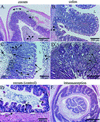
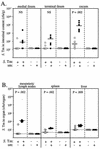
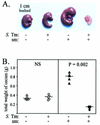


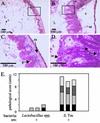


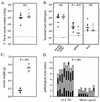
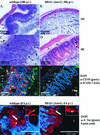
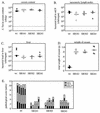
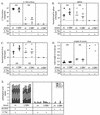

References
-
- Bohnhoff, M., B. L. Drake, and C. P. Miller. 1954. Effect of streptomycin on susceptibility of intestinal tract to experimental Salmonella infection. Proc. Soc. Exp. Biol. 86:132-137. - PubMed
-
- Bohnhoff, M., and C. P. Miller. 1962. Enhanced susceptibility to Salmonella infection in streptomycin-treated mice. J. Infect. Dis. 111:117-127. - PubMed
Publication types
MeSH terms
Substances
LinkOut - more resources
Full Text Sources
Other Literature Sources
Miscellaneous

